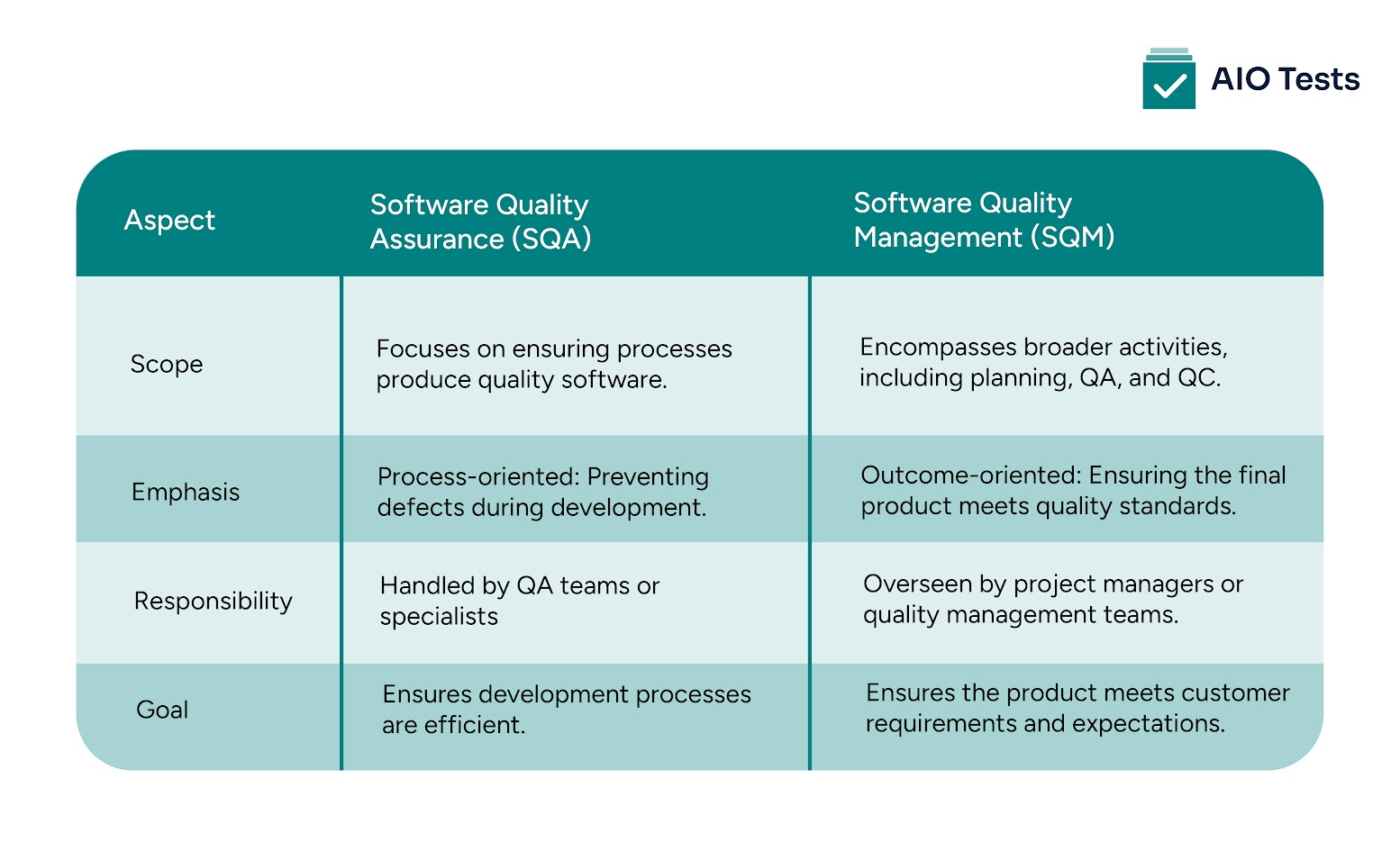
Software has become an integral part of nearly every aspect of modern life—healthcare, finance, entertainment, and education. As organizations increasingly rely on technology to operate and stay competitive, the demand for high-quality software continues to grow.
This makes Software Quality Assurance (SQA) a critical process, ensuring that software performs as intended while meeting the highest standards of performance, security, and usability.
Keep in mind that Software Quality Assurance (SQA) goes beyond simply identifying and fixing bugs; it is a structured approach to maintaining and improving quality throughout the entire software development lifecycle.
In this article, we will be exploring the essence of SQA, its processes, the distinction between SQA and SQM, and why these practices are indispensable for businesses.
Software Quality Assurance (SQA) is a structured, pre-planned process designed to uphold quality across the entire software development lifecycle.
Unlike simple testing, which occurs at the end of a project, SQA is embedded into every phase—from initial design and development to testing and ongoing maintenance. By adhering to predefined standards, processes, and practices, SQA focuses on preventing defects and enabling teams to build reliable, secure, and efficient software.
SQA ensures that software meets key requirements for functionality, performance, usability, and security while aligning with organizational goals and customer expectations. It also involves monitoring development processes to identify areas for improvement and fostering a culture of quality among developers.
By leveraging frameworks like ISO standards, as well as agile and DevOps methodologies, SQA professionals create a solid foundation for building resilient and adaptable software in an ever-evolving technological landscape.
Ultimately, SQA is not only vital for achieving technical excellence but also for reducing development costs, preventing post-release issues, and delivering smooth, successful user experiences.

Software Quality Management (SQM) is a management process that aims to develop and manage the quality of software to ensure that the product meets the quality standards expected by the customer while also meeting any necessary regulatory and developer requirements.
While both SQM and SQA focus on ensuring software quality, they differ in scope and approach:
Here’s a better breakdown of the difference between the two:

In essence, software quality assurance (SQA) is a subset of software quality management (SQM). While SQA emphasizes processes, SQM covers the entire quality management framework, integrating assurance, control, and planning.
Implementing effective SQA practices offers several benefits:
Adhering to established standards is crucial for effective Software Quality Assurance (SQA). These frameworks provide structured approaches to ensure software products meet quality expectations and regulatory requirements. Key standards and models include:
The ISO 9000 family comprises standards related to quality management systems, designed to help organizations ensure they meet customer and stakeholder needs. While ISO 9001 focuses on quality management principles applicable across various industries, its guidelines are pertinent to software development, emphasizing process efficiency and customer satisfaction.
CMMI is a process-level improvement training and appraisal program that helps organizations enhance their performance. It provides a structured view of process improvement across a project, division, or entire organization. CMMI focuses on assessing and improving an organization's software and systems engineering processes, offering a pathway to integrate traditionally separate organizational functions, set process improvement goals, and provide guidance for quality processes.
ISO/IEC 25010:2011 is part of the SQuaRE (Software Quality Requirements and Evaluation) series, providing a model for software product quality and system quality in use. It defines eight quality characteristics:
These characteristics provide a comprehensive framework for evaluating software quality, and supporting activities such as requirements specification, design objectives, testing, quality assurance, and audit.
By aligning SQA practices with these standards and models, organizations can systematically enhance software quality, ensuring products meet user expectations and comply with industry benchmarks.
To effectively implement SQA, organizations should:
In conclusion, Software Quality Assurance (SQA) is a cornerstone of successful software development, ensuring that products not only meet technical standards but also deliver value to users.
SQA isn’t just about finding bugs, it's about building software that’s reliable from the ground up. And to do that right, you need advanced test management tools that keep the process smooth and effective.
AIO Tests is a comprehensive solution that supports all stages of the software testing lifecycle. It assists you from planning and designing to execution, analysis, closure, and maintenance. Its user-friendly interface allows teams to create, manage, and execute test cases efficiently, ensuring thorough validation of software products.
You can integrate AIO Tests into your SQA strategy and enhance collaboration, maintain traceability, and get higher-quality software releases.